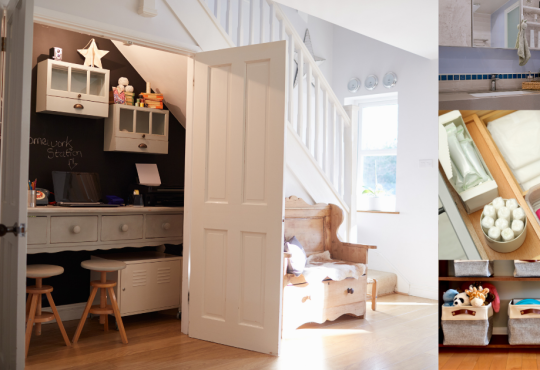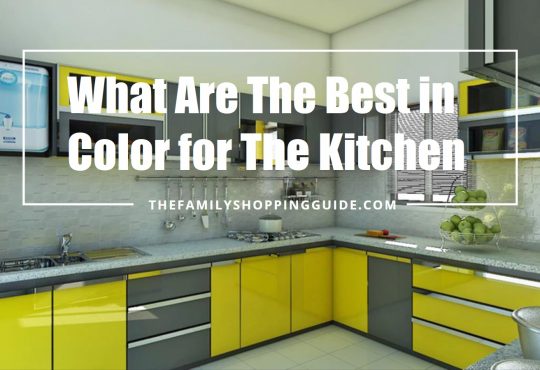Ever walked into a living room and thought, “Wow, this looks wealthy”? The secret often isn’t a luxury budget—it’s smart choices. In this guide, you’ll discover how to make your living room look expensive using practical steps that won’t drain your wallet.
First, we’ll dig into what creates a high-end feel—think texture, balance, and lighting. Then, we’ll break down easy, low-cost swaps and smart DIY tricks. Ready to turn your space into a showstopper that feels rich and cozy? Let’s dive in!
1. Start With a Clean Canvas
Declutter Like a Pro
No matter how stylish your furniture or decor is, clutter instantly makes a room feel smaller, messier, and less appealing. If you want to make your living room look expensive, the first step is to clear out anything that doesn’t serve a clear purpose or elevate the space.
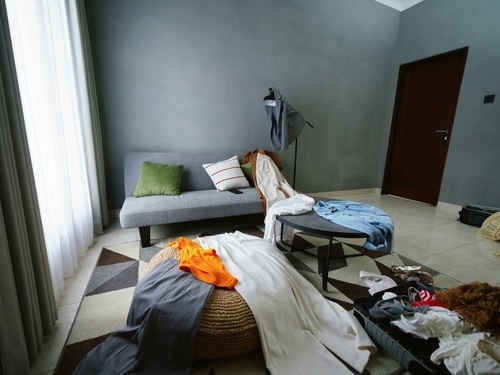
Start by removing visual distractions:
-
Get rid of old or unused items, like dried-up pens, random cables, faded books, or tired decor pieces.
-
Keep surfaces clean and intentional. Don’t overload coffee tables or shelves—less is more when aiming for a high-end look.
-
Store the essentials smartly. Use decorative trays to group remotes and coasters, or stack books neatly for a designer-style display.
-
Use baskets, bins, or stylish boxes to hide toys, blankets, game controllers, or mail piles—items you use regularly but don’t want out in the open.
The goal is to make your space feel curated, not crowded. Even luxury homes often have minimal, thoughtfully chosen pieces that breathe and balance each other.
Deep Clean Everything
A clean room instantly feels more luxurious—even if you haven’t changed a single item in it. Dirt, dust, and stains can make even expensive furniture look worn down and cheap. That’s why deep cleaning is essential if you want to make your living room look expensive without spending a dime.
Here’s what to tackle:
-
Polish wooden furniture and metallic accents to bring back shine and remove fingerprints or watermarks.
-
Vacuum carpets, area rugs, and under the furniture. Don’t forget the corners where dust and crumbs love to hide.
-
Clean or launder curtains, pillow covers, and throws—fabrics hold onto odors and can fade in color if neglected.
-
Wipe mirrors, picture frames, and windows with a streak-free glass cleaner. Natural light will bounce more beautifully around the room when glass surfaces are spotless.
If your sofa cushions are looking tired, give them a fluff or steam them lightly to refresh their shape. Clean, well-kept pieces will always appear more expensive—even if they came from a budget store.
And here’s a bonus tip: add a light, fresh scent to your space. A clean-smelling room with subtle candles, a diffuser, or even a lemony all-purpose spray can leave a strong impression of luxury and attention to detail.
2. Embrace Thoughtful Color & Contrast
Stick With Neutrals & Rich Accent Walls
When you’re trying to make your living room look expensive, the right color scheme goes a long way. Neutrals like white, cream, beige, taupe, and soft gray are classic and clean—they create a calm and timeless base that feels polished and high-end.
But don’t stop at just painting everything beige. To add personality and depth, introduce a rich accent wall. This adds visual interest without overwhelming the space.
Try this:
Choose a deep, elegant color like charcoal gray, forest green, navy blue, or even a muted burgundy for one feature wall. These tones create drama and give the room a “designer” touch.
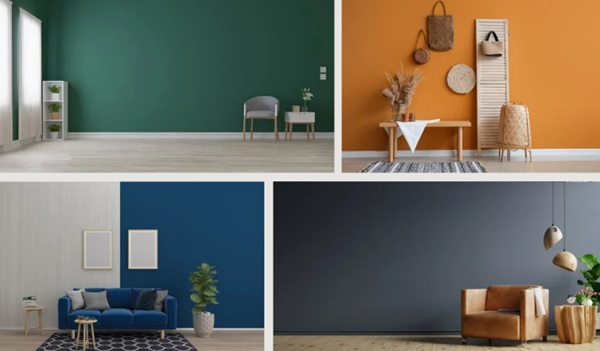
Use peel-and-stick wallpaper with texture—like faux linen, grasscloth, or subtle geometric patterns. It’s renter-friendly and instantly adds a layer of sophistication.

Paint trim or moldings in a contrasting but complementary shade—for example, deep navy walls with crisp white baseboards—for a more custom, architectural feel.
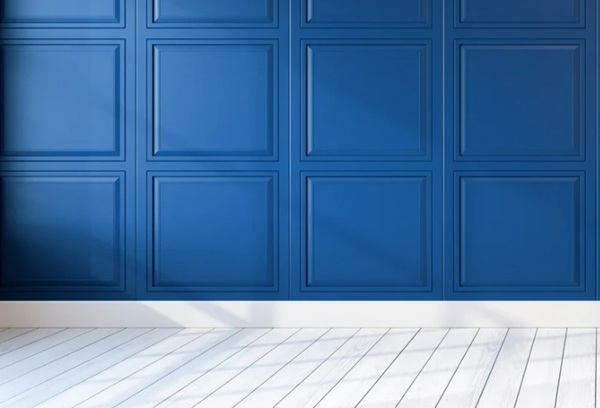
Neutrals make a space feel calm and spacious, while accent colors make it memorable and stylish.
Play With Contrast
One of the easiest ways to make your living room look expensive is by using contrast. When everything blends too much, the room can feel flat and uninspired. A little contrast helps highlight your furniture and decor, making each element stand out.
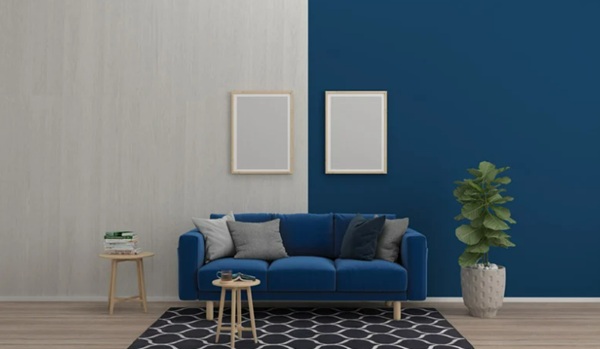
Here’s how to do it:
-
Mix dark and light tones—pair a white or beige sofa with charcoal or black throw pillows and a bold rug. This sharpens the look and makes it more dynamic.
-
Balance soft fabrics with sleek surfaces—for example, velvet cushions on a leather couch or a glass coffee table against a wool rug.
-
Add a few metallic touches. Gold, brass, or matte black accents on lamps, picture frames, curtain rods, or side tables can create that upscale, designer feel—without the designer price tag.
Just remember: a little contrast goes a long way. Aim for balance so the room still feels cohesive and not overly busy.
3. Use Smart Furniture Strategies
Choose Quality, Not Quantity
When you’re decorating on a budget, it’s easy to think you need to fill every corner. However, in reality, fewer well-chosen pieces often appear more expensive than a room filled with mismatched furniture. To make your living room look expensive, focus on quality over quantity—even if that means starting with just a few key items.
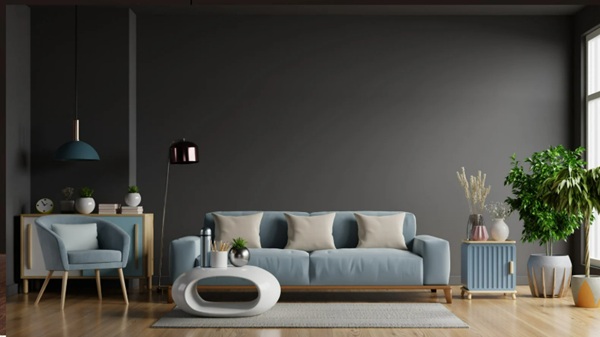
-
Invest in one standout piece, like a stylish sofa with clean lines, or a pair of modern armchairs in a timeless fabric like linen, velvet, or leather.
-
Stick to simple silhouettes that won’t go out of style—think neutral colors, sleek frames, and structured cushions.
-
Mix and match by pairing thrift store finds or hand-me-downs with one mid-range item. That balance can make even secondhand furniture look elevated and intentional.
You don’t need a full furniture set. A well-composed mix of pieces with a consistent color story or texture can instantly pull your room together.
Try DIY Upgrades
You don’t always have to buy new to make your space feel high-end. A few smart DIY upgrades can totally transform basic or worn-down pieces.
-
Paint plain furniture like bookshelves or side tables in modern, bold tones like matte black, navy, or deep green.
-
Re-stain old wooden tables to give them a rich, refreshed finish. Add a protective clear coat for a polished look.
-
Swap out hardware—changing knobs or handles on drawers and cabinets to brushed gold, matte black, or even acrylic can make them look custom and more luxurious.
Even budget-friendly furniture from IKEA or secondhand stores can look designer with just a little creativity and elbow grease.
Anchor With a Rug
A great rug can completely transform the feel of a living room. It helps define your seating area, adds warmth, and instantly makes the space feel more finished and luxurious.
To make your living room look expensive, keep these rug tips in mind:
-
Go for plush or soft textures like velvet blends, low-pile wool, or even high-quality synthetics in neutral tones. Avoid thin, scratchy rugs—they can cheapen the whole space.
-
Choose the right size. Your rug should be large enough that at least the front legs of your sofa and chairs sit on it. A too-small rug can make the room feel cramped and incomplete.
-
Layer rugs if you’re on a budget. Place a large, inexpensive jute or flatweave rug underneath a smaller, more detailed rug. This adds texture, saves money, and looks thoughtfully styled.
Rugs help ground your space and tie everything together. Whether you’re going for cozy or elegant, it’s one of the easiest ways to elevate your room without overspending.
4. Elevate With Lighting
Layer Your Lighting
One of the easiest ways to make your living room look expensive is by rethinking your lighting. Most people rely on a single ceiling light, but high-end interiors use layers of lighting to create depth, warmth, and visual interest.
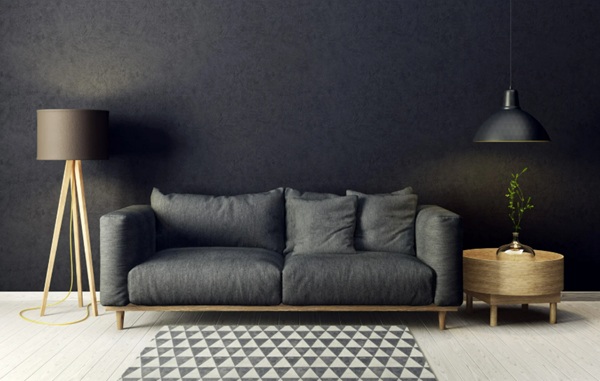
Here’s how to layer your lighting like a pro:
-
Ambient lighting is your main source of light—usually ceiling fixtures. Consider swapping basic flush mounts or outdated chandeliers with a more stylish pendant or modern chandelier for a quick upgrade.
-
Task lighting helps with specific activities like reading or working. Place floor lamps next to a reading chair or a sleek table lamp on a side table.
-
Accent lighting adds drama. Use small wall sconces, LED strip lights on shelves, or picture lights to highlight artwork, plants, or textured walls.
Layered lighting makes a room feel cozy, functional, and high-end. It’s a small design tweak that makes a big difference.
Choose Warm and Dimmable
Light color and intensity can completely change the mood of a room. Cool lighting often feels harsh and clinical, while warm lighting (around 2700K) feels soft, inviting, and elegant.
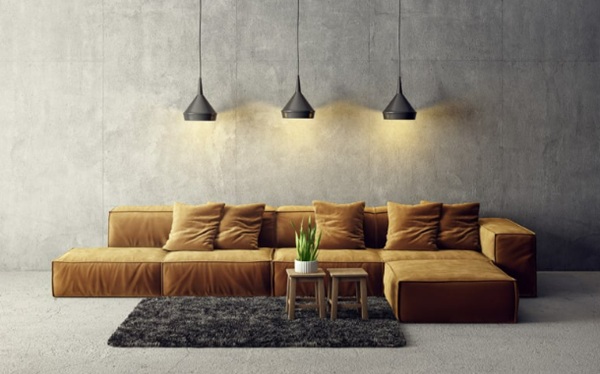
To instantly elevate your space:
-
Switch to warm-toned LED bulbs for a cozy, expensive-looking glow.
-
Install dimmer switches if possible. They let you adjust the lighting to match the time of day or the vibe you want—whether it’s a bright family gathering or a low-lit movie night.
Lighting that’s warm and adjustable instantly creates a more refined atmosphere without needing expensive fixtures.
DIY Fixture Updates
You don’t have to spend a lot to make your lighting feel designer. A few small updates can refresh old lamps or ceiling lights.
Try these budget-friendly upgrades:
-
Swap outdated fixtures with tension-rod pendant lights, plug-in sconces, or stylish floor lamps—great options if you rent or can’t hardwire.
-
Spray paint lamp bases in matte black, gold, or a bold accent color to match your room’s palette.
-
Change lampshades to something with texture or a modern shape—like linen drums or pleated designs—to make even older lamps feel new.
Lighting is one of the most overlooked tools in home design, yet it’s one of the most powerful ways to make your living room look expensive without overspending.
5. Introduce Luxe Textures & Fabrics
Mix Textures Strategically
Texture is one of the most underrated ways to make your living room look expensive. Even if your space is filled with budget-friendly pieces, mixing the right textures can instantly make it feel cozy, rich, and high-end.
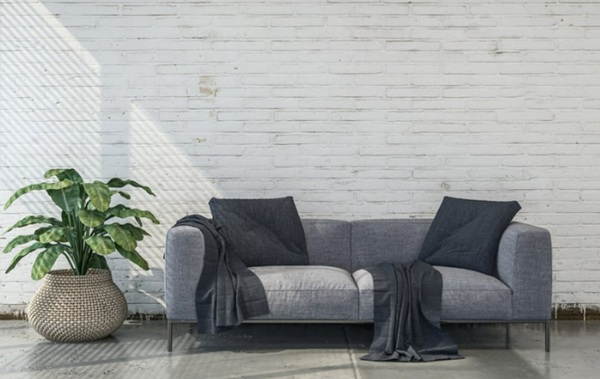
Here’s how to do it:
-
Velvet or suede throw pillows add a soft, luxurious touch that looks way more expensive than they are.
-
Chunky knit or faux fur blankets create that inviting “boutique hotel” vibe, especially when draped casually over a sofa or chair.
-
Linen or cotton-blend curtains offer a lightweight, airy feel that softens the room. Floor-to-ceiling styles in neutral tones feel especially upscale.
Aim to combine at least two or three different textures in your soft furnishings—this helps the room feel layered and thoughtfully designed, even on a tight budget.
Add Reflective Details
Shiny and reflective surfaces are often found in high-end interiors because they catch the light and create a feeling of openness and elegance. You can use this trick to make your living room look expensive without major renovations.
Try adding:
-
A large mirror across from a window to bounce natural light and make the room feel bigger and brighter.
-
Metallic finishes like gold, brass, chrome, or matte black—small touches like side tables, picture frames, or lamp bases can bring instant polish.
-
Glossy accessories like lacquered trays, polished marble coasters, or ceramic vases. These little pieces elevate your surfaces and add visual interest.
The key is balance—combine cozy textures with sleek, reflective surfaces to create that perfect blend of comfort and luxury.
6. Edit Your Decor
Start With a Focal Point
Every expensive-looking living room has one thing in common: a strong focal point. It’s the first thing your eye lands on when you walk in, and it helps anchor the space. Without one, the room can feel scattered or unfinished.
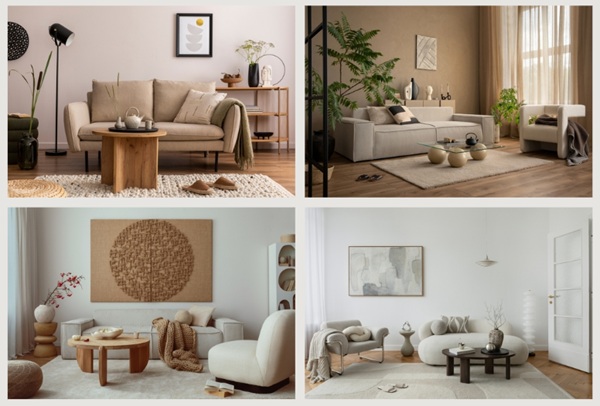
To make your living room look expensive, choose a focal point that reflects your style and adds visual interest. This could be:
-
A gallery wall with framed art, photography, or even printable digital downloads in cohesive frames.
-
A large statement mirror that reflects light and makes the room feel bigger and brighter.
-
Decorative wall panels or bold wallpaper on one feature wall to add depth and texture.
The goal is to guide the eye and give your space a sense of purpose and polish—just like you’d see in a professionally designed home.
Curate Decor Vignettes
When it comes to styling shelves, coffee tables, or sideboards, less really is more. Expensive homes rarely feel cluttered—they feel curated.
Here’s how to style your surfaces like a pro:
-
Create small vignettes—group together a few decorative items like a candle, a plant, and a decorative object on a tray or book stack.
-
Use the rule of odds—group items in sets of 3 or 5, which feels more natural and balanced to the eye.
-
Leave space—don’t feel the need to fill every corner. Empty space gives your decor room to breathe and makes the arrangement feel intentional.
Try rotating your accessories seasonally to keep things fresh without buying more stuff.
Include Greenery
Adding plants is one of the fastest and most affordable ways to make your living room look expensive. They bring color, life, and a sense of luxury that even the best decor can’t always match.
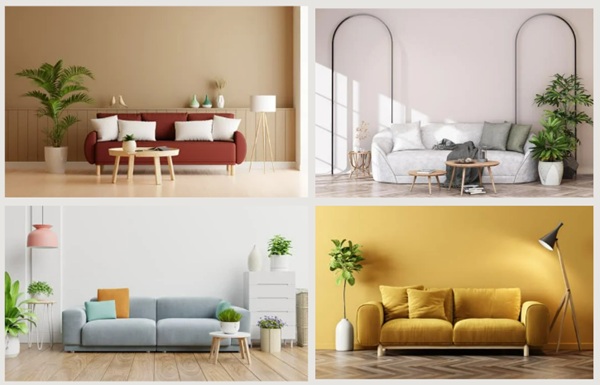
Here’s how to get it right:
-
Mix plant sizes—try a tall floor plant (like a fiddle leaf fig or snake plant) to fill corners, and smaller tabletop plants or succulents for shelves and coffee tables.
-
Use stylish pots in ceramic, woven, or marble-look finishes. Even inexpensive plants can look upscale with the right container.
No green thumb? Go for realistic faux plants. Today’s options look surprisingly real and require zero maintenance.
7. Upgrade Soft Furnishings Smartly
Pillows with Polished Looks
Throw pillows might seem like small details, but they can make a huge difference when you’re trying to make your living room look expensive. The trick is to treat them like design pieces, not afterthoughts.
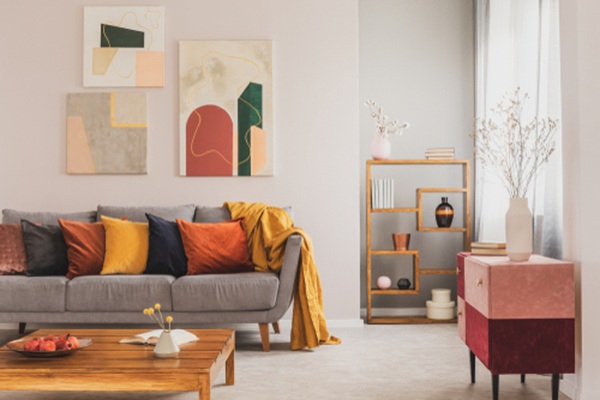
Here’s how to elevate your pillows:
-
Choose quality covers in materials like velvet, silk blends, or textured linen. These fabrics look rich and feel luxurious—even if the insert is from a budget store.
-
Size matters—go for larger pillows (20″–24″) instead of smaller, standard ones. Bigger pillows look more substantial and upscale.
-
Mix styles and textures—use at least two different types per sofa. For example, pair a patterned velvet pillow with a plain linen one in a bold color. This adds depth and dimension to your seating area.
Swap out covers seasonally or when you change your room’s color palette. It’s one of the easiest and most affordable ways to refresh your space.
Curtains That Speak
Curtains do more than just block light—they frame your windows and set the tone for the whole room. If they’re too short or made from cheap-looking fabric, they can instantly bring down the look of your space.
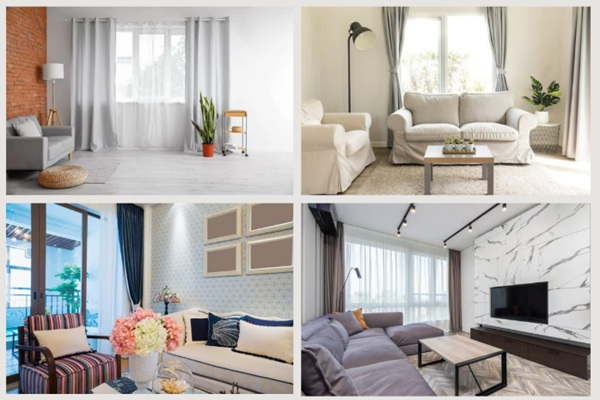
To make your living room look expensive, follow these simple tips:
-
Hang curtain rods high, about 4–6 inches above the window frame, or even closer to the ceiling. This draws the eye upward and makes the ceilings feel taller.
-
Let your curtains touch the floor—or just barely brush it. Short curtains can make a room feel unfinished.
-
Stick to natural or luxe-feel fabrics like linen, cotton, or even a thick velvet for a more dramatic look. Avoid thin, shiny synthetics unless they have good weight and texture.
Even affordable curtains can look designer when styled right—it’s all about length, fabric choice, and placement.
8. Pay Attention to Layout & Flow
Create Comfortable Conversation Zones
A room that feels well thought out always looks more expensive—and layout plays a big role in that. One of the simplest ways to improve your living room’s feel is to create seating areas that encourage conversation and comfort.
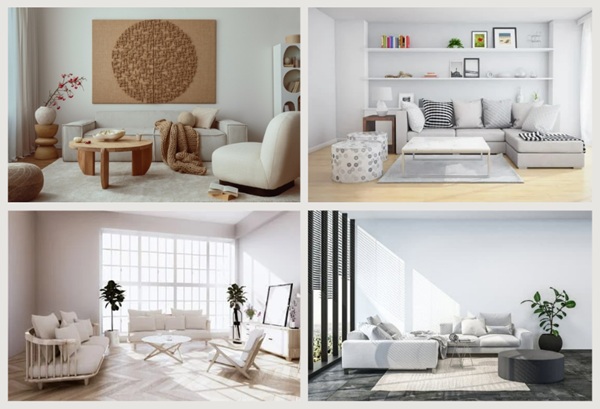
Here’s how:
-
Face sofas and chairs toward each other to create a cozy, inviting setup. This naturally encourages interaction and gives the space a more intentional look.
-
Avoid pushing all the furniture against the walls (unless you’re working with a very small room). Floating pieces slightly inward adds depth and a designer feel.
-
Use coffee tables, ottomans, or trays near seating to hold drinks, books, or decor—this makes the space feel lived-in but polished.
Think of it like setting up a hotel lounge—functional, stylish, and centered around comfort and conversation.
Embrace Breathing Room
One thing expensive-looking rooms never feel is cramped. Whether your space is large or small, making sure furniture isn’t overcrowded is key to achieving a more open, upscale vibe.
-
Leave clear pathways—aim for 18 to 24 inches of space around furniture so people can move easily without bumping into things.
-
Give each piece its own space to shine. For example, avoid lining up all your furniture against one wall. Instead, pull key pieces slightly away from the wall to create depth and flow.
A well-spaced layout doesn’t just look better—it also feels better to live in. It helps the room breathe and gives everything a sense of balance.
9. Incorporate Art & Personal Style
Choose Art That Speaks
You don’t need expensive gallery pieces to make your living room feel elevated. What matters most is choosing art that adds character and complements your space. In fact, the right piece of art—no matter the price tag—can completely change the look and feel of your room.
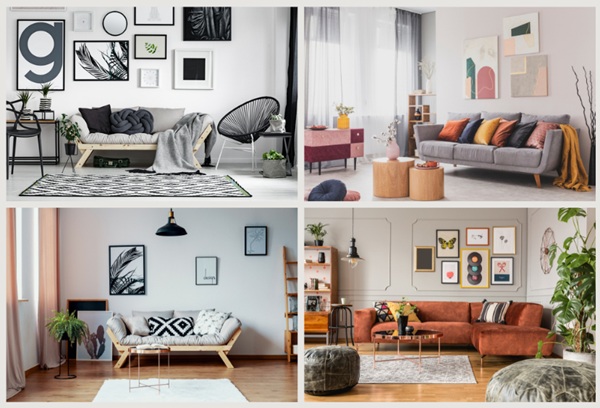
Here are a few affordable, creative options:
-
Make your own wall art—paint simple abstract shapes or brushstroke designs that match your color scheme. You don’t need to be an artist; just keep it clean and modern.
-
Download and print free or low-cost artwork from platforms like Unsplash, The Met Museum’s open-access collection, or Etsy. Frame it at home to give it a custom, high-end feel (just be sure to credit the source when required).
-
Use personal or meaningful pieces, like a framed travel photo, your child’s artwork, or a quote that speaks to you. Mixing personal elements with stylish frames adds authenticity, which is something no store-bought decor can replicate.
The goal is to reflect your style and personality while still keeping things visually cohesive.
Use Cohesive Frames and Mats
Even the most beautiful artwork can look out of place if the framing is mismatched or messy. To make your living room look expensive, your frames should feel intentional and consistent.
-
Stick to a unified look—choose one frame color or finish (like black, white, wood, or gold) and keep it consistent across your artwork for a more curated, gallery-style effect.
-
Use mats (the white border inside a frame) to give each piece more breathing room and help the artwork stand out. Mats make prints feel larger, cleaner, and more professional—even if the art itself was free or DIY.
By simply choosing the right frames and placing them thoughtfully, you can create an art wall or display that feels polished and high-end, without spending a fortune.
10. Final Touches That Seal the Look
Once the big pieces are in place, it’s the small details that truly complete your space. These finishing touches can subtly elevate the whole room and really help make your living room look expensive without major effort or cost.
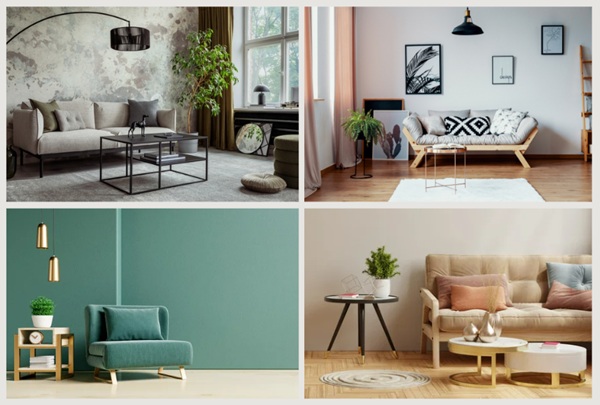
Mix Metals (But Keep It Intentional)
Don’t be afraid to mix finishes like brass, black, chrome, or brushed gold—doing so creates depth and gives your room a more curated, designer feel.
-
Stick to two finishes max to keep it cohesive. For example, brass and matte black pair beautifully.
-
Use metals across small items like lamp bases, picture frames, candle holders, or curtain rods.
The key is balance—scattering these accents evenly helps them feel connected rather than chaotic.
Keep Clutter to a Minimum
A cluttered space, no matter how stylish, will never look expensive. Regularly edit what’s on display.
-
Keep surfaces clean and purposeful—limit decor to a few standout pieces rather than a crowded collection.
-
Rotate items from time to time so your space feels fresh without constantly buying new things.
Less truly is more when it comes to creating a high-end look.
Use Concealed Storage
Visible clutter like cables, remote controls, or piles of magazines can instantly cheapen the look of a space.
-
Hide everyday items in decorative boxes, woven baskets, or storage ottomans.
-
Use furniture with built-in storage—like coffee tables with drawers or lidded baskets that double as side tables.
This keeps things neat and visually calm, which instantly makes your space feel more polished.
Engage the Senses
Luxury is not just about how a room looks—it’s also how it feels, smells, and even sounds.
-
Use candles, reed diffusers, or essential oil sprays to create a consistent and inviting scent throughout the room. Stick to subtle, clean fragrances like sandalwood, linen, or citrus.
-
Add soft background music or use a sleek Bluetooth speaker to bring a peaceful ambiance.
This sensory layer is subtle but powerful—it makes your home feel welcoming and put-together in a way people will notice.
Refresh With the Seasons
High-end interiors don’t stay the same all year. Make small seasonal swaps to keep your living room feeling fresh and current.
-
Switch pillow covers, throws, or even artwork depending on the time of year—lighter tones and breathable fabrics in spring/summer, richer textures and deeper colors in fall/winter.
-
Add seasonal accents like a bowl of pinecones in winter or a vase of fresh flowers in spring.
These little updates help keep your space feeling intentionally styled year-round without major spending.
Conclusion
You don’t need a massive budget or a full room makeover to make your living room look expensive. With the right combination of smart styling, thoughtful layout, and small but impactful upgrades, even the simplest space can feel elevated and polished. Start by decluttering and deep cleaning, then build on that clean foundation with layered lighting, rich textures, and carefully chosen furniture. Add some visual interest through art, mirrors, and textiles, and finish it all off with details like hidden storage, seasonal accents, and subtle scents to create a truly refined vibe.
The beauty of this approach is that it’s flexible—you can make changes gradually, one corner at a time, and still see a big difference. The key is to be intentional with your choices and focus on what makes a space feel cohesive, comfortable, and stylish. By following these simple strategies, your living room can feel high-end, welcoming, and uniquely you—without the high-end price tag.



